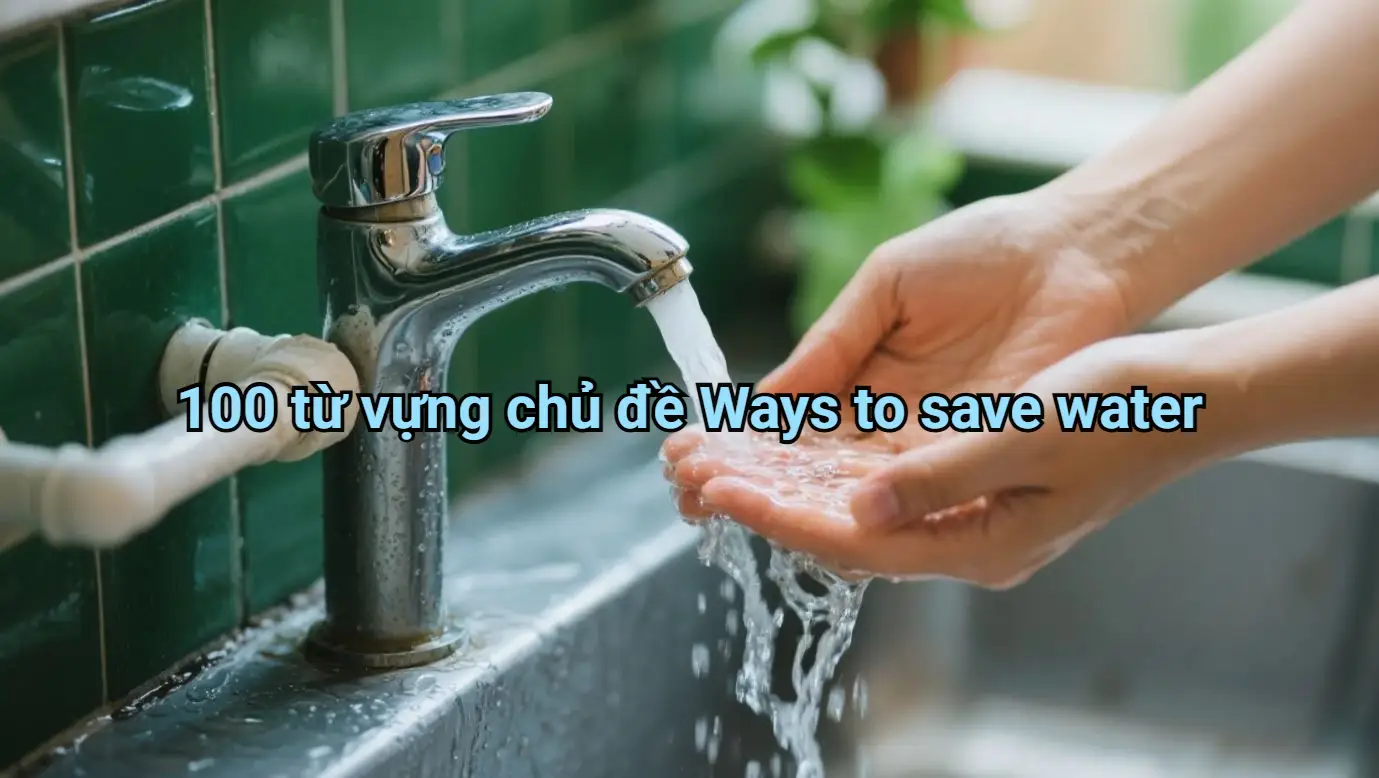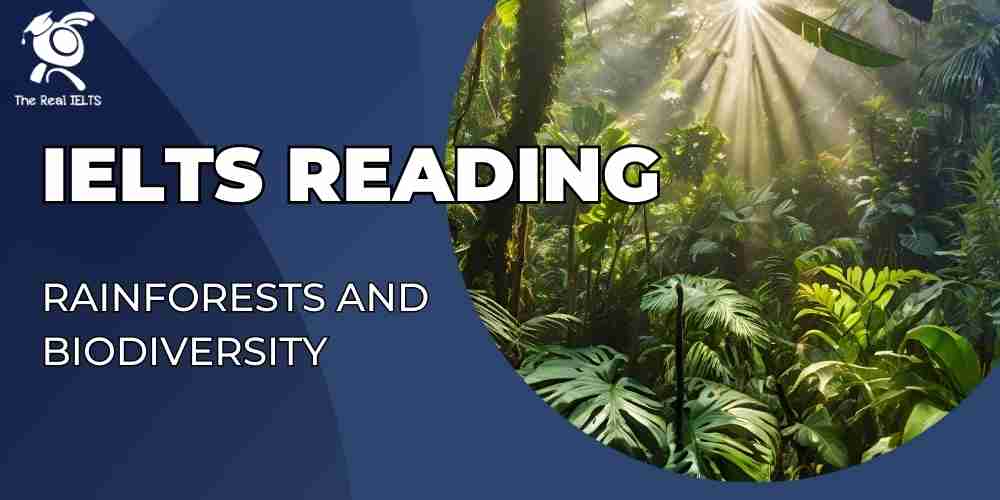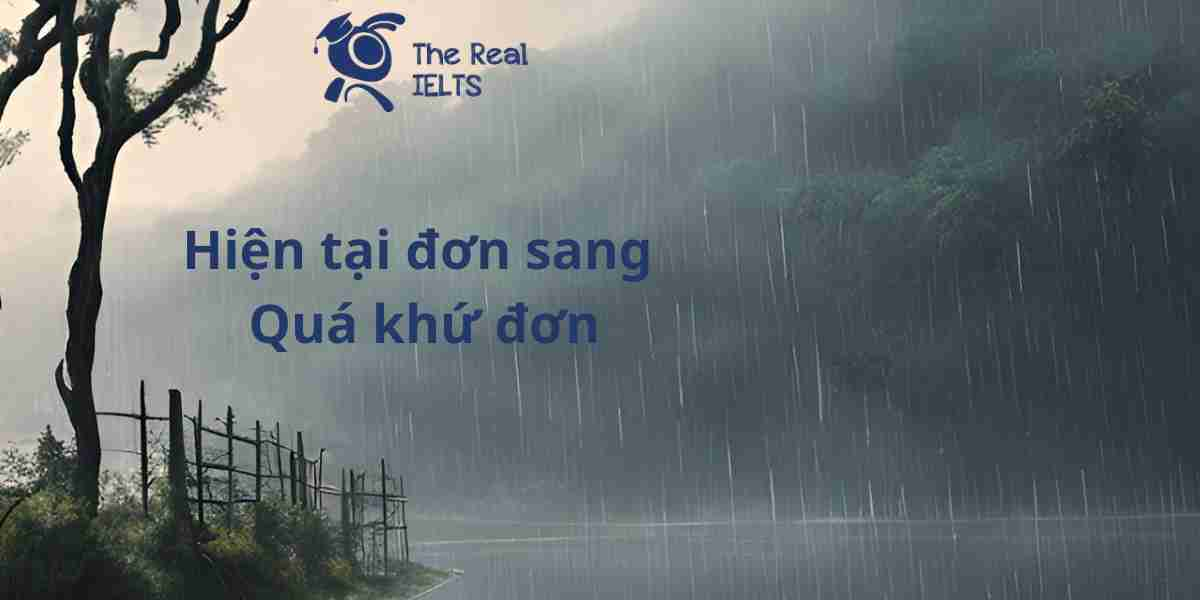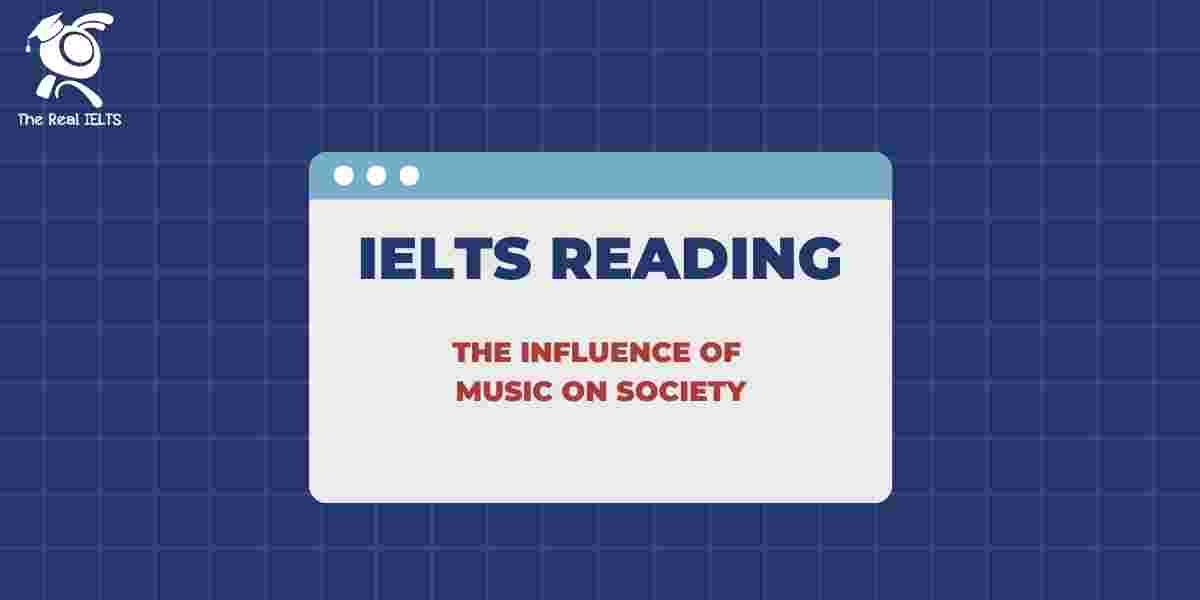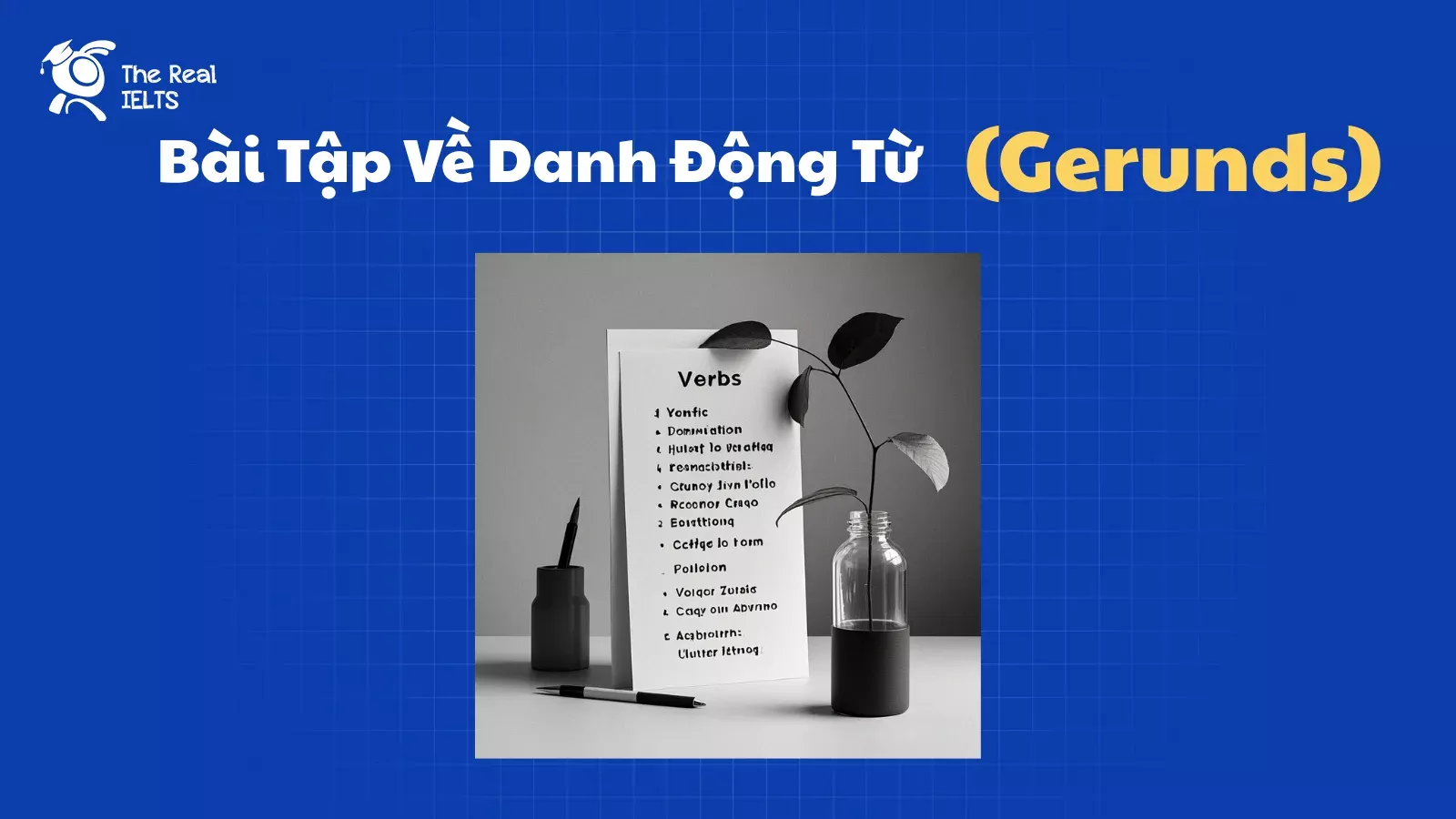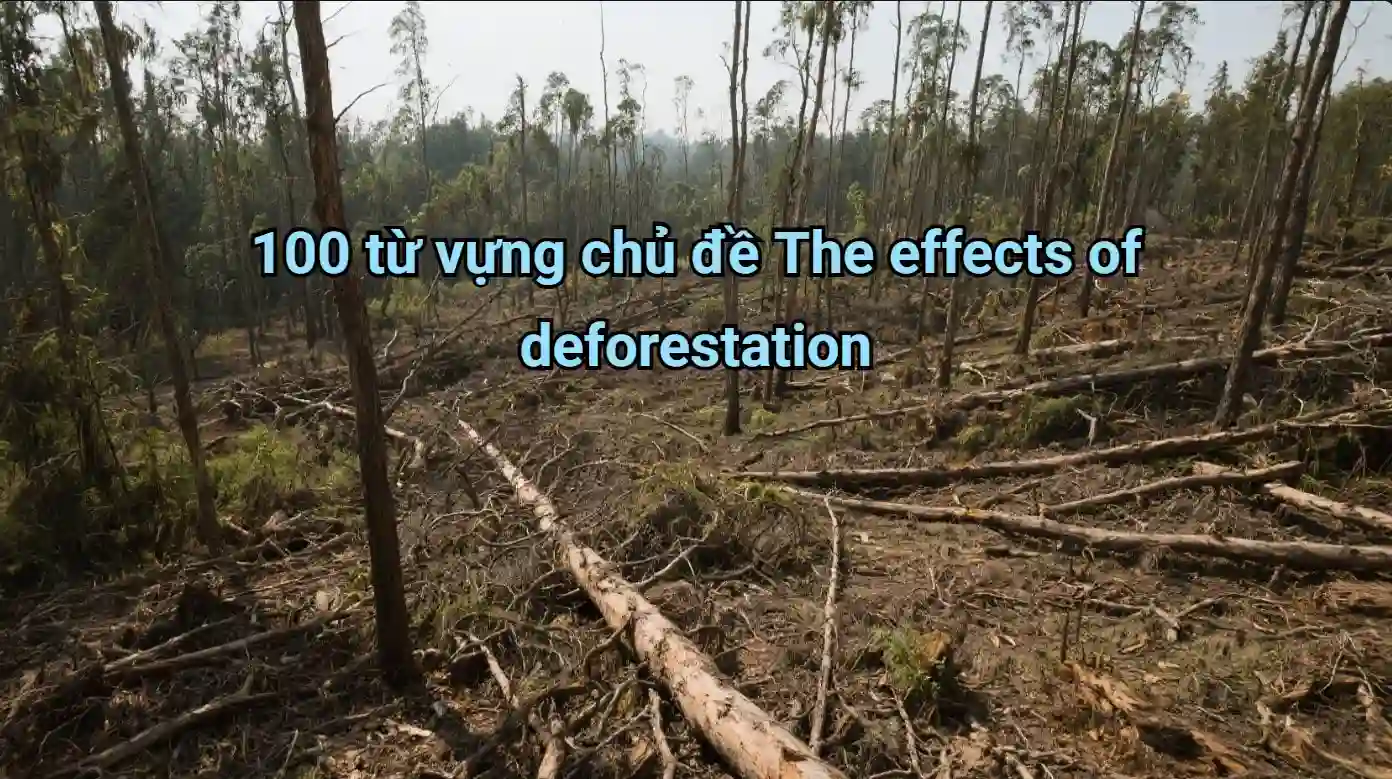Kỹ năng đọc hiểu trong kỳ thi IELTS đòi hỏi sự nhạy bén và chiến lược để xử lý các văn bản học thuật phức tạp trong thời gian giới hạn. IELTS Reading thử thách thí sinh qua ba đoạn văn với độ khó tăng dần, yêu cầu khả năng đọc lướt, đọc sâu và xác định thông tin chính xác. Để đạt band cao, người học cần trau dồi từ vựng, rèn kỹ năng skimming, scanning và quản lý 60 phút hiệu quả, đảm bảo trả lời đúng 40 câu hỏi.
Đọc thêm: IELTS Reading 11 dạng bài phần 4
The Impact of Urban Green Spaces
Urban green spaces, such as parks, gardens, and tree-lined streets, play a vital role in improving city life. These areas provide residents with opportunities for recreation, relaxation, and social interaction. Studies show that access to green spaces can reduce stress levels and improve mental well-being. For example, a 2019 study found that spending just 20 minutes in a park can lower cortisol levels, a hormone linked to stress. Additionally, green spaces contribute to environmental sustainability. Trees and plants help absorb carbon dioxide, reduce air pollution, and regulate city temperatures by providing shade. In cities like Singapore, urban planners prioritize green spaces, integrating them into building designs and public areas. However, maintaining these spaces can be costly, requiring regular upkeep and investment. Some cities struggle to balance the budget for green space maintenance with other priorities like infrastructure development. Despite these challenges, the benefits of urban green spaces are undeniable, as they enhance both the quality of life and the ecological health of urban areas. Encouraging community involvement in maintaining these spaces can also foster a sense of ownership among residents. As urban populations grow, the demand for accessible green spaces will likely increase, making their preservation and expansion a key focus for city planners worldwide.
Questions (True/False/Not Given)
- Urban green spaces can help reduce stress by lowering cortisol levels.
- Singapore is the only city that integrates green spaces into building designs.
- Maintaining urban green spaces is often inexpensive and easy for cities.
- Community involvement in green space maintenance can create a sense of ownership.
- The demand for green spaces is decreasing due to urban population growth.
Answers
- True
- False
- False
- True
- False
Explanations (Vietnamese)
- True: Đoạn văn đề cập rằng một nghiên cứu năm 2019 cho thấy dành 20 phút trong công viên có thể làm giảm mức cortisol, một loại hormone liên quan đến căng thẳng. Thông tin này xác nhận rằng không gian xanh đô thị giúp giảm căng thẳng bằng cách giảm cortisol.
- False: Đoạn văn nói rằng ở Singapore, các nhà quy hoạch đô thị ưu tiên không gian xanh và tích hợp chúng vào thiết kế tòa nhà, nhưng không nói rằng Singapore là thành phố duy nhất làm điều này. Từ “only” trong câu hỏi không được đoạn văn hỗ trợ.
- False: Đoạn văn nêu rõ rằng việc duy trì không gian xanh đô thị có thể tốn kém, đòi hỏi bảo trì thường xuyên và đầu tư. Điều này mâu thuẫn với ý rằng việc duy trì không gian xanh là rẻ và dễ dàng.
- True: Đoạn văn đề cập rằng khuyến khích cộng đồng tham gia duy trì không gian xanh có thể thúc đẩy cảm giác sở hữu của cư dân. Thông tin này phù hợp với câu hỏi.
- False: Đoạn văn nói rằng khi dân số đô thị tăng, nhu cầu về không gian xanh dễ tiếp cận có khả năng sẽ tăng lên. Điều này trái ngược với ý rằng nhu cầu đang giảm do tăng dân số đô thị.
Urban Green Spaces and Their Impact
Urban green spaces, such as parks, gardens, and tree-lined streets, play a vital role in enhancing the quality of life in cities. These areas provide residents with opportunities for recreation, relaxation, and social interaction, fostering a sense of community. Studies have shown that access to green spaces can reduce stress, improve mental health, and encourage physical activity, which is particularly important in densely populated urban environments where sedentary lifestyles are common. Moreover, green spaces contribute to environmental sustainability by improving air quality, reducing urban heat, and supporting biodiversity. For instance, trees and plants absorb carbon dioxide and pollutants, while also providing habitats for birds and insects. However, the availability of green spaces is often uneven, with lower-income neighborhoods frequently having limited access compared to wealthier areas. This disparity can exacerbate social inequalities, as disadvantaged communities miss out on the health and social benefits these spaces offer. City planners are increasingly recognizing the need to integrate green spaces into urban development, but challenges such as land scarcity and budget constraints often hinder progress. Innovative solutions, like rooftop gardens and vertical forests, are being explored to address these issues. Despite these efforts, ensuring equitable access to green spaces remains a critical challenge for sustainable urban growth.
Reading Questions
- What is one benefit of urban green spaces mentioned in the passage?
A. Increasing property prices
B. Reducing stress levels
C. Providing employment opportunities
D. Enhancing internet connectivity - According to the passage, how do green spaces contribute to environmental sustainability? (Choose 2 correct answers)
A. Improving air quality
B. Reducing urban noise
C. Supporting biodiversity
D. Decreasing public transport use - Why do lower-income neighborhoods often have limited access to green spaces?
A. Lack of community interest
B. Uneven distribution of green spaces
C. High maintenance costs
D. Government restrictions - What challenge do city planners face in integrating green spaces into urban areas?
A. Public opposition to green initiatives
B. Lack of scientific evidence
C. Land scarcity and budget constraints
D. Absence of innovative designs - Which of the following is an example of an innovative solution mentioned in the passage?
A. Community-driven park management
B. Rooftop gardens
C. Public transport expansion
D. Noise reduction barriers
Answers
- B
- A and C
- B
- C
- B
Explanations
- Câu 1: Đáp án đúng – B
- Giải thích: Đoạn văn nêu rõ rằng green spaces giúp “reduce stress, improve mental health” (giảm căng thẳng, cải thiện sức khỏe tinh thần).
- Sai lầm của các đáp án khác:
- A: Không đề cập đến việc tăng giá bất động sản.
- C: Không nhắc đến cơ hội việc làm.
- D: Không liên quan đến kết nối internet.
- Câu 2: Đáp án đúng – A và C
- Giải thích: Đoạn văn nói green spaces “improving air quality” (cải thiện chất lượng không khí) và “supporting biodiversity” (hỗ trợ đa dạng sinh học) thông qua việc hấp thụ CO2, cung cấp môi trường sống cho chim và côn trùng.
- Sai lầm của các đáp án khác:
- B: Không đề cập đến giảm tiếng ồn.
- D: Không liên quan đến giảm sử dụng giao thông công cộng.
- Câu 3: Đáp án đúng – B
- Giải thích: Đoạn văn nêu “the availability of green spaces is often uneven” (sự phân bố không đồng đều) và các khu thu nhập thấp có ít không gian xanh hơn.
- Sai lầm của các đáp án khác:
- A: Không nhắc đến thiếu sự quan tâm của cộng đồng.
- C: Chi phí bảo trì không được đề cập là lý do.
- D: Không có thông tin về hạn chế từ chính phủ.
- Câu 4: Đáp án đúng – C
- Giải thích: Đoạn văn đề cập đến “challenges such as land scarcity and budget constraints” (thiếu đất và hạn chế ngân sách) là trở ngại cho việc tích hợp không gian xanh.
- Sai lầm của các đáp án khác:
- A: Không đề cập đến sự phản đối của công chúng.
- B: Có bằng chứng khoa học về lợi ích của green spaces.
- D: Có các thiết kế sáng tạo như rooftop gardens.
- Câu 5: Đáp án đúng – B
- Giải thích: Đoạn văn liệt kê “rooftop gardens” như một giải pháp sáng tạo để giải quyết vấn đề thiếu không gian xanh.
- Sai lầm của các đáp án khác:
- A: Không nhắc đến quản lý công viên do cộng đồng.
- C: Mở rộng giao thông công cộng không liên quan.
- D: Không đề cập đến rào chắn giảm tiếng ồn.
The Rise of Telemedicine in Healthcare
Telemedicine, the delivery of healthcare services through digital platforms, has transformed the medical landscape in recent years. Many patients now prefer virtual consultations due to their convenience, especially for minor ailments or follow-up visits. Doctors argue that telemedicine saves time and reduces the burden on overcrowded hospitals, allowing them to focus on critical cases. A 2023 study found that 70% of patients using telemedicine reported high satisfaction, citing ease of access and shorter waiting times. However, some healthcare professionals warn that virtual consultations may compromise the quality of care, as physical examinations are often essential for accurate diagnoses. Critics also point out that not all patients, particularly the elderly, are comfortable with technology, which can limit access to care. In rural areas, where internet connectivity is unreliable, telemedicine’s effectiveness is further reduced. Supporters counter that ongoing advancements in technology will address these issues, making telemedicine a reliable option for most populations. Governments in countries like Australia and Canada have invested heavily in telemedicine infrastructure, believing it will improve healthcare equity. Despite its challenges, telemedicine is seen as a vital tool for modern healthcare, with its adoption expected to grow.
Reading Questions
- Do doctors believe that telemedicine helps reduce hospital overcrowding?
- Are all patients satisfied with telemedicine services?
- Do critics believe that telemedicine is unsuitable for elderly patients due to technological barriers?
- Is telemedicine considered ineffective in urban areas with strong internet connectivity?
- Do governments believe that telemedicine will replace traditional healthcare entirely?
Answers
- Yes
- No
- Yes
- No
- Not Given
Explanations
- Câu 1: Đáp án đúng là Yes
- Giải thích: Đoạn văn nêu rõ “Doctors argue that telemedicine saves time and reduces the burden on overcrowded hospitals” (Bác sĩ cho rằng telemedicine tiết kiệm thời gian và giảm áp lực cho các bệnh viện đông đúc). Điều này đồng tình với quan điểm rằng telemedicine giúp giảm tình trạng quá tải bệnh viện.
- Câu 2: Đáp án đúng là No
- Giải thích: Đoạn văn đề cập rằng “70% of patients using telemedicine reported high satisfaction” (70% bệnh nhân hài lòng), ngụ ý rằng không phải tất cả bệnh nhân đều hài lòng, vì còn 30% không được đề cập là hài lòng. Do đó, quan điểm “tất cả bệnh nhân hài lòng” là sai.
- Câu 3: Đáp án đúng là Yes
- Giải thích: Đoạn văn viết “Critics also point out that not all patients, particularly the elderly, are comfortable with technology” (Các nhà phê bình chỉ ra rằng không phải tất cả bệnh nhân, đặc biệt là người cao tuổi, thoải mái với công nghệ). Điều này đồng tình với quan điểm rằng telemedicine không phù hợp với người cao tuổi do rào cản công nghệ.
- Câu 4: Đáp án đúng là No
- Giải thích: Đoạn văn không đề cập trực tiếp đến hiệu quả của telemedicine ở khu vực đô thị, nhưng có nói rằng “In rural areas, where internet connectivity is unreliable, telemedicine’s effectiveness is reduced” (Ở khu vực nông thôn, nơi kết nối internet không ổn định, hiệu quả của telemedicine bị giảm). Điều này ngụ ý rằng ở nơi có kết nối internet tốt (như khu vực đô thị), telemedicine không bị coi là kém hiệu quả.
- Câu 5: Đáp án đúng là Not Given
- Giải thích: Đoạn văn đề cập rằng các chính phủ ở Úc và Canada đầu tư mạnh vào telemedicine để “improve healthcare equity” (cải thiện công bằng y tế), nhưng không có thông tin nào cho thấy họ tin rằng telemedicine sẽ thay thế hoàn toàn y tế truyền thống. Do đó, quan điểm này không được đề cập.
The Impact of Urban Farming
(A) Urban farming, the practice of growing food in city environments, has gained popularity as a response to food security concerns. Unlike traditional agriculture, it utilizes small spaces like rooftops, balconies, and vacant lots. This approach allows city dwellers to produce fresh fruits, vegetables, and herbs locally, reducing reliance on long-distance food transport. Urban farming also fosters community engagement, as neighbors often collaborate on shared garden projects.
(B) One significant benefit of urban farming is its environmental impact. By growing food locally, it reduces the carbon footprint associated with transporting produce from rural farms to urban markets. Additionally, urban farms contribute to greener cities by absorbing carbon dioxide and improving air quality. Studies estimate that a single urban garden can offset the emissions of several households annually, making it a practical solution for climate-conscious cities.
(C) Despite its benefits, urban farming faces challenges. Limited space in densely populated areas restricts the scale of production, and high land costs make it difficult to secure suitable plots. Soil contamination in some urban areas also poses a risk to crop safety. To address these issues, innovative techniques like hydroponics and vertical farming are being adopted, though they require significant initial investment.
(D) Urban farming also has social benefits. It provides educational opportunities, teaching children and adults about sustainable practices and healthy eating. Community gardens often serve as social hubs, strengthening neighborhood ties. In some cities, urban farms have been linked to reduced crime rates, as they transform neglected spaces into vibrant, productive areas.
Reading Questions
- A description of how urban farming reduces the need for long-distance food transport.
- An explanation of how urban farming contributes to reducing carbon emissions.
- A mention of the challenges related to limited space and high land costs.
- An example of urban farming promoting community engagement.
- A reference to urban farming’s role in transforming neglected spaces.
Answers
- A
- B
- C
- A
- D
Explanations
- Câu 1: Đáp án đúng – A
- Giải thích: Đoạn A nêu rõ rằng urban farming cho phép “produce fresh fruits, vegetables, and herbs locally, reducing reliance on long-distance food transport” (sản xuất trái cây, rau củ và thảo dược tại địa phương, giảm sự phụ thuộc vào vận chuyển thực phẩm đường dài). Thông tin này khớp với mô tả về việc giảm nhu cầu vận chuyển thực phẩm.
- Câu 2: Đáp án đúng – B
- Giải thích: Đoạn B đề cập rằng “By growing food locally, it reduces the carbon footprint associated with transporting produce” (Việc trồng thực phẩm tại địa phương giảm lượng khí thải carbon liên quan đến vận chuyển sản phẩm) và urban gardens “offset the emissions of several households annually” (bù đắp lượng khí thải của nhiều hộ gia đình mỗi năm). Điều này phù hợp với mô tả về việc giảm khí thải carbon.
- Câu 3: Đáp án đúng – C
- Giải thích: Đoạn C nêu rõ các thách thức: “Limited space in densely populated areas restricts the scale of production, and high land costs make it difficult to secure suitable plots” (Không gian hạn chế ở khu vực đông dân cư giới hạn quy mô sản xuất, và chi phí đất cao khiến việc tìm địa điểm phù hợp trở nên khó khăn). Thông tin này khớp với mô tả về thách thức liên quan đến không gian và chi phí đất.
- Câu 4: Đáp án đúng – A
- Giải thích: Đoạn A đề cập rằng “Urban farming also fosters community engagement, as neighbors often collaborate on shared garden projects” (Nông nghiệp đô thị cũng thúc đẩy sự gắn kết cộng đồng, khi hàng xóm thường hợp tác trong các dự án vườn chung). Điều này phù hợp với mô tả về việc thúc đẩy sự tham gia của cộng đồng.
- Câu 5: Đáp án đúng – D
- Giải thích: Đoạn D nêu rằng urban farms “transform neglected spaces into vibrant, productive areas” (biến những không gian bị bỏ hoang thành những khu vực sôi động, hiệu quả). Thông tin này khớp với mô tả về vai trò của nông nghiệp đô thị trong việc cải tạo các không gian bị bỏ bê.
The Process of Composting Organic Waste
Composting is an eco-friendly method to recycle organic waste, such as food scraps and garden clippings, into nutrient-rich soil. The process begins with collecting organic materials, including vegetable peels, coffee grounds, and leaves, in a compost bin. These materials must be balanced with carbon-rich items, like dry leaves, and nitrogen-rich items, like grass clippings, to ensure proper decomposition.
Next, the pile is aerated by turning it regularly with a pitchfork to introduce oxygen, which speeds up microbial activity. Maintaining moisture levels similar to a wrung-out sponge is crucial, as excessive dryness or wetness slows decomposition. Within weeks, microorganisms break down the organic matter into humus, a dark, crumbly substance.
Temperature plays a key role. The pile heats up to 60°C due to microbial activity, killing pathogens and weed seeds. After about three months, the compost matures and becomes ready for use as a natural fertilizer in gardens or farms. In 2024, over 25 million households worldwide adopted composting to reduce landfill waste and improve soil health.
Composting reduces methane emissions from landfills, which account for 14% of global greenhouse gases. However, improper composting, such as adding meat or dairy, can attract pests. Community programs teach best practices, ensuring effective waste management and sustainable agriculture.
Completion Structure
The completion structure is a flowchart outlining the composting process. It includes the following steps with five gaps to fill:
- Step 1: Collect __ (1) in a compost bin.
- Step 2: Balance carbon-rich and __ (2) materials.
- Step 3: Aerate pile using a __ (3) to add oxygen.
- Step 4: Maintain __ (4) levels like a wrung-out sponge.
- Step 5: Use mature compost as __ (5) after three months.
Questions
- What is collected in a compost bin?
- What type of materials are balanced with carbon-rich items?
- What tool is used to aerate the compost pile?
- What is maintained at levels similar to a wrung-out sponge?
- What is the mature compost used as after three months?
Answers
- Organic materials
- Nitrogen-rich
- Pitchfork
- Moisture
- Natural fertilizer
Explanations
- Câu 1: Organic materials
Đáp án đúng: Organic materials. Bài đọc nêu “The process begins with collecting organic materials, including vegetable peels, coffee grounds, and leaves, in a compost bin”. Cụm “organic materials” được sử dụng trực tiếp, phù hợp với bước thu thập. Các từ như “food scraps” không bao quát toàn bộ vì bài đọc liệt kê nhiều loại, nên “organic materials” là chính xác. - Câu 2: Nitrogen-rich
Đáp án đúng: Nitrogen-rich. Bài đọc đề cập “These materials must be balanced with carbon-rich items, like dry leaves, and nitrogen-rich items, like grass clippings”. Từ “nitrogen-rich” mô tả loại vật liệu cân bằng với carbon-rich, khớp với bước 2. Từ khác như “carbon-rich” không phù hợp vì đã được nêu trong câu hỏi. - Câu 3: Pitchfork
Đáp án đúng: Pitchfork. Bài đọc nói “the pile is aerated by turning it regularly with a pitchfork”. Từ “pitchfork” chỉ rõ công cụ dùng để thông thoáng đống ủ, phù hợp với bước 3. Các công cụ khác như “shovel” không được nhắc đến. - Câu 4: Moisture
Đáp án đúng: Moisture. Bài đọc nêu “Maintaining moisture levels similar to a wrung-out sponge is crucial”. Từ “moisture” chỉ mức độ ẩm cần duy trì, khớp với bước 4. Các từ như “temperature” không đúng vì được đề cập riêng ở đoạn khác. - Câu 5: Natural fertilizer
Đáp án đúng: Natural fertilizer. Bài đọc ghi “the compost matures and becomes ready for use as a natural fertilizer”. Cụm “natural fertilizer” mô tả công dụng của phân compost sau ba tháng, phù hợp với bước 5. Các từ như “soil” không chính xác vì không bao hàm ý “phân bón”.
The Impact of Telecommuting on Modern Work
Telecommuting, or working from home using digital tools, has reshaped the modern workplace. By 2024, approximately 40% of global employees worked remotely at least part-time, driven by advances in video conferencing and cloud computing. This shift reduces commuting time, saving workers an average of 72 minutes daily. Employees report higher job satisfaction due to flexible schedules, which allow better work-life balance.
Companies benefit from telecommuting through reduced office costs. Firms save up to $11,000 annually per remote worker by cutting expenses on rent and utilities. Additionally, remote work boosts productivity, with studies showing a 13% increase in output for telecommuters compared to office-based staff. However, challenges exist. Poor internet connectivity in rural areas hinders effective remote work, affecting 15% of telecommuters globally.
Telecommuting also has environmental benefits. Fewer commutes lead to a 54% reduction in carbon emissions for remote workers, contributing to climate change mitigation. Yet, prolonged remote work can cause social isolation, with 20% of telecommuters reporting feelings of loneliness. To address this, companies are adopting hybrid models, blending remote and in-office work.
Governments support telecommuting through policies like tax incentives for companies offering remote options. In 2023, over 50 countries introduced such measures to promote flexible work. As technology evolves, telecommuting is likely to expand, redefining how work is performed worldwide.
Questions
- What percentage of global employees telecommuted part-time by 2024?
- How much time do workers save daily by not commuting?
- What is the annual cost saving per remote worker for companies?
- By what percentage do carbon emissions decrease for remote workers?
- How many countries introduced tax incentives for telecommuting in 2023?
Answers
- 40%
- 72 minutes
- $11,000
- 54%
- 50
Explanations
- Câu 1: 40%
Đáp án đúng: 40%. Bài đọc nêu “By 2024, approximately 40% of global employees worked remotely at least part-time”. Con số “40%” được lấy trực tiếp từ văn bản. Các đáp án khác như “50%” hoặc “30%” không xuất hiện, nên không đúng. - Câu 2: 72 minutes
Đáp án đúng: 72 minutes. Bài đọc đề cập “saving workers an average of 72 minutes daily” khi không phải di chuyển. Cụm “72 minutes” khớp chính xác với thông tin. Các con số khác như “60 minutes” không được nhắc đến. - Câu 3: $11,000
Đáp án đúng: $11,000. Bài đọc ghi “Firms save up to $11,000 annually per remote worker”. Số tiền “$11,000” được nêu rõ ràng. Các giá trị như “$10,000” hoặc “$12,000” không xuất hiện, do đó không phù hợp. - Câu 4: 54%
Đáp án đúng: 54%. Bài đọc nêu “Fewer commutes lead to a 54% reduction in carbon emissions for remote workers”. Con số “54%” là chính xác. Các tỷ lệ khác như “50%” hoặc “60%” không được đề cập, nên không đúng. - Câu 5: 50
Đáp án đúng: 50. Bài đọc nói “In 2023, over 50 countries introduced such measures” liên quan đến ưu đãi thuế. Con số “50” được rút ra trực tiếp. Các số như “40” hoặc “60” không xuất hiện trong ngữ cảnh này, nên không chính xác.
The Process of Rainwater Harvesting
Rainwater harvesting is a sustainable method to collect and store rainwater for domestic and agricultural use. The process begins with the collection of rainwater from surfaces like rooftops or paved areas. These surfaces act as catchments, channeling water into gutters, which direct the flow toward a filtration system. The filtration system removes debris, such as leaves and dust, ensuring the water is clean for storage.
After filtration, the water flows into a storage tank, typically made of concrete or plastic, designed to hold large volumes. Some systems include a first-flush diverter, which discards the initial runoff containing contaminants, improving water quality. The stored water is then distributed through pipes to households or irrigation systems for use in gardening or farming.
To maintain water quality, regular maintenance of the storage tank is essential. This involves cleaning to prevent algae growth and checking for leaks. In advanced systems, a pump is used to transfer water from the tank to points of use, ensuring consistent pressure. Rainwater harvesting reduces reliance on municipal water supplies and conserves groundwater, making it an eco-friendly solution, especially in water-scarce regions. By 2024, millions of households in Asia and Africa adopted this system to address water shortages.
Diagram Description
The diagram illustrates the rainwater harvesting process, showing the flow of water through various components. It includes five labeled positions:
- Position A: The surface where rainwater is initially collected.
- Position B: The component that channels water from the collection surface.
- Position C: The system that cleans the water before storage.
- Position D: The structure where clean water is stored.
- Position E: The device that discards contaminated initial runoff.
Questions
- What is the name of the surface at Position A where rainwater is collected?
- What is the component at Position B that channels water?
- What is the system at Position C that cleans the water?
- What is the structure at Position D where water is stored?
- What is the device at Position E that improves water quality by discarding initial runoff?
Answers
- Position A: Catchments
- Position B: Gutters
- Position C: Filtration system
- Position D: Storage tank
- Position E: First-flush diverter
Explanations
- Câu 1: Position A – Catchments
Từ đúng: Catchments. Bài đọc nêu “The process begins with the collection of rainwater from surfaces like rooftops or paved areas. These surfaces act as catchments”. Từ “catchments” được sử dụng trực tiếp để chỉ bề mặt thu nước mưa, phù hợp với mô tả vị trí A là nơi nước mưa được thu thập ban đầu. - Câu 2: Position B – Gutters
Từ đúng: Gutters. Bài đọc đề cập “These surfaces act as catchments, channeling water into gutters, which direct the flow”. Cụm “gutters” chỉ các bộ phận dẫn nước từ bề mặt thu thập, khớp với vai trò của vị trí B là kênh dẫn nước. - Câu 3: Position C – Filtration system
Từ đúng: Filtration system. Bài đọc giải thích “gutters, which direct the flow toward a filtration system. The filtration system removes debris”. Cụm “filtration system” phù hợp với vị trí C, nơi nước được làm sạch trước khi lưu trữ. - Câu 4: Position D – Storage tank
Từ đúng: Storage tank. Bài đọc nêu “After filtration, the water flows into a storage tank, typically made of concrete or plastic”. Cụm “storage tank” chỉ cấu trúc lưu trữ nước, khớp với vị trí D trong sơ đồ. - Câu 5: Position E – First-flush diverter
Từ đúng: First-flush diverter. Bài đọc đề cập “Some systems include a first-flush diverter, which discards the initial runoff containing contaminants”. Cụm “first-flush diverter” phù hợp với vị trí E, nơi loại bỏ nước mưa ban đầu bị nhiễm bẩn để cải thiện chất lượng nước.
The Impact of Digital Learning in Education
Digital learning has revolutionized education by integrating technology into classrooms and beyond. Online platforms, such as massive open online courses (MOOCs), provide access to high-quality education for millions worldwide, particularly in underserved regions. These platforms offer flexible schedules, allowing students to learn at their own pace. By 2024, over 200 million learners had enrolled in MOOCs, covering subjects from computer science to literature.
Interactive tools, like virtual simulations and educational apps, enhance student engagement. For instance, science students can conduct virtual experiments, which are safer and more cost-effective than traditional labs. Such tools also cater to diverse learning styles, making education more inclusive. Teachers benefit too, using data analytics to monitor progress and tailor lessons to individual needs.
However, digital learning poses challenges. Limited internet access in rural areas restricts participation, leaving some students behind. Additionally, excessive screen time raises concerns about eye strain and reduced attention spans. Educators also require training to effectively integrate technology into teaching.
Despite these hurdles, digital learning fosters global collaboration. Students from different countries can work together on projects via online forums, promoting cultural exchange. Governments and institutions are investing in infrastructure to bridge the digital divide, ensuring broader access. As technology advances, digital learning continues to reshape education, preparing students for a rapidly changing world.
Summary
Digital learning has transformed education by offering flexible and inclusive learning opportunities. ______ (1) provide access to education for millions, especially in underserved areas. Interactive tools like ______ (2) engage students and support diverse learning needs. However, ______ (3) in rural areas limits access to these resources. Excessive ______ (4) is a concern for student health. Investments in ______ (5) aim to reduce disparities and expand digital learning globally.
Word Options
- MOOCs
- virtual simulations
- limited internet access
- screen time
- infrastructure
- textbooks
- funding
- traditional exams
Answers
Câu 1: MOOCs
Câu 2: virtual simulations
Câu 3: limited internet access
Câu 4: screen time
Câu 5: infrastructure
Explanations
- Câu 1: MOOCs
Từ đúng: MOOCs. Bài đọc nêu “Online platforms, such as massive open online courses (MOOCs), provide access to high-quality education for millions”. Từ “MOOCs” trong danh sách khớp chính xác với thông tin này. Từ gây nhiễu như “textbooks” không liên quan vì bài đọc tập trung vào học tập số, không phải tài liệu truyền thống. - Câu 2: virtual simulations
Từ đúng: virtual simulations. Bài đọc đề cập “Interactive tools, like virtual simulations and educational apps, enhance student engagement”. Cụm “virtual simulations” trong danh sách phù hợp với ví dụ về công cụ tương tác. Từ gây nhiễu “traditional exams” không được nhắc đến và không liên quan đến công cụ tăng cường tương tác. - Câu 3: limited internet access
Từ đúng: limited internet access. Bài đọc chỉ ra “Limited internet access in rural areas restricts participation”. Cụm “limited internet access” trong danh sách phản ánh đúng thách thức này. Từ gây nhiễu “funding” không được đề cập trực tiếp liên quan đến hạn chế truy cập ở vùng nông thôn. - Câu 4: screen time
Từ đúng: screen time. Bài đọc nêu “excessive screen time raises concerns about eye strain and reduced attention spans”. Cụm “screen time” trong danh sách phù hợp với mối lo ngại về sức khỏe. Từ gây nhiễu “textbooks” không liên quan đến vấn đề sức khỏe do công nghệ. - Câu 5: infrastructure
Từ đúng: infrastructure. Bài đọc nói “Governments and institutions are investing in infrastructure to bridge the digital divide”. Từ “infrastructure” trong danh sách khớp với nỗ lực này. Từ gây nhiễu “funding” tuy liên quan đến đầu tư nhưng không cụ thể bằng “infrastructure” trong ngữ cảnh cải thiện truy cập số.
The Rise of Renewable Energy in Developing Nations
Developing nations are increasingly adopting renewable energy to meet growing energy demands while addressing environmental concerns. Solar power, in particular, has become a cornerstone of this transition due to its affordability and accessibility. In rural areas, where grid infrastructure is often unreliable, solar panels provide a consistent electricity supply for households and small businesses. By 2024, over 300 million people in Africa and Asia gained access to electricity through off-grid solar systems.
Wind energy is also gaining traction, especially in coastal regions with strong winds. Countries like India and Vietnam have invested heavily in wind farms, which generate clean energy and reduce reliance on fossil fuels. These projects create jobs, boosting local economies and improving living standards.
Government policies play a crucial role in this shift. Subsidies for renewable energy projects lower installation costs, making them attractive to investors. For instance, Kenya’s feed-in tariff system encourages private companies to develop solar and wind projects by guaranteeing fixed payments for energy produced.
Despite progress, challenges remain. High initial costs for equipment and limited technical expertise can slow adoption. Additionally, inconsistent policies across regions create uncertainty for investors. However, international partnerships are helping address these issues by providing funding and training programs. As renewable energy expands, developing nations are reducing carbon emissions and building a sustainable future, setting an example for global energy transitions.
Summary
Renewable energy is transforming developing nations by providing sustainable power solutions. ______ (1) power is widely used in rural areas to supply electricity where grids are unreliable. ______ (2) energy is growing in coastal regions, creating jobs and reducing ______ (3) dependency. Government ______ (4) make renewable projects more affordable, as seen in Kenya’s tariff system. However, challenges like high costs and lack of ______ (5) expertise hinder progress.
Word Options
- Solar
- Wind
- Hydro
- fossil fuel
- subsidies
- taxes
- technical
- financial
Answers
Câu 1: Solar
Câu 2: Wind
Câu 3: fossil fuel
Câu 4: subsidies
Câu 5: technical
Explanations
- Câu 1: Solar
Từ đúng: Solar. Bài đọc nêu rõ “Solar power, in particular, has become a cornerstone” và “solar panels provide a consistent electricity supply” ở khu vực nông thôn. Từ “Solar” trong danh sách phù hợp chính xác. Từ gây nhiễu như “Hydro” không được nhắc đến trong bài, nên không phù hợp. - Câu 2: Wind
Từ đúng: Wind. Bài đọc đề cập “Wind energy is also gaining traction, especially in coastal regions”. Từ “Wind” trong danh sách khớp với thông tin này. Từ gây nhiễu như “Hydro” không xuất hiện trong ngữ cảnh năng lượng phát triển ở vùng ven biển. - Câu 3: fossil fuel
Từ đúng: fossil fuel. Bài đọc nói rằng các trang trại gió “reduce reliance on fossil fuels”. Cụm “fossil fuel” trong danh sách phản ánh đúng thông tin. Từ gây nhiễu như “financial” không liên quan đến việc giảm phụ thuộc vào nguồn năng lượng. - Câu 4: subsidies
Từ đúng: subsidies. Bài đọc giải thích “Subsidies for renewable energy projects lower installation costs”. Từ “subsidies” trong danh sách phù hợp với vai trò của chính sách chính phủ. Từ gây nhiễu “taxes” không được đề cập và không mang ý nghĩa hỗ trợ tài chính như “subsidies”. - Câu 5: technical
Từ đúng: technical. Bài đọc nêu “limited technical expertise” là một thách thức. Từ “technical” trong danh sách khớp với cụm này. Từ gây nhiễu “financial” không phù hợp vì bài đọc đã đề cập “high initial costs” riêng biệt, và “expertise” liên quan đến kỹ thuật, không phải tài chính.
The Role of Citizen Science in Environmental Research
Citizen science, where ordinary people contribute to scientific research, has transformed environmental studies. Volunteers collect data on air quality, water pollution, and wildlife populations, providing researchers with valuable information. For instance, the Global Water Watch program engages communities to monitor river health, measuring levels of nitrates and phosphates. This data helps scientists track pollution trends over time.
Unlike professional scientists, citizen scientists often lack formal training but are guided by clear protocols. Mobile apps and online platforms make participation easier, allowing volunteers to submit observations instantly. In 2023, over 500,000 people worldwide contributed to biodiversity projects, documenting species like birds and insects. Such efforts have led to the discovery of new species and better conservation strategies.
Citizen science also promotes public awareness. By participating, individuals learn about environmental issues like climate change and habitat loss. Programs often include workshops to teach data collection techniques, fostering a sense of responsibility. For example, the Urban Bee Project trains volunteers to monitor pollinators in cities, raising awareness about declining bee populations.
Despite its benefits, citizen science faces challenges. Data quality can vary due to inconsistent methods, and funding for training programs is often limited. However, partnerships between universities and communities are addressing these issues by improving guidelines and resources. Citizen science continues to grow, empowering people to contribute to a sustainable future while advancing scientific knowledge.
Questions
- The Global Water Watch program involves communities in monitoring ______ health.
- Citizen scientists measure levels of ______ and ______ to track pollution.
- In 2023, over ______ people contributed to biodiversity projects worldwide.
- The Urban Bee Project focuses on monitoring ______ in cities.
- Partnerships with ______ are helping improve guidelines for citizen science.
Answers
- river
- nitrates, phosphates
- 500,000
- pollinators
- universities
Explanations
- Câu 1: The Global Water Watch program involves communities in monitoring river health.
Từ đúng: river. Trong đoạn văn, câu “the Global Water Watch program engages communities to monitor river health” xác định rõ chương trình này tập trung vào sức khỏe của sông. Không có từ nào khác như “lake” hay “ocean” được đề cập, nên “river” là lựa chọn duy nhất phù hợp. - Câu 2: Citizen scientists measure levels of nitrates and phosphates to track pollution.
Từ đúng: nitrates, phosphates. Đoạn văn nêu rõ “measuring levels of nitrates and phosphates” là hoạt động của các nhà khoa học công dân trong chương trình Global Water Watch. Các chất khác như “carbon” hay “sulfur” không được nhắc đến, do đó “nitrates” và “phosphates” là chính xác. - Câu 3: In 2023, over 500,000 people contributed to biodiversity projects worldwide.
Từ đúng: 500,000. Đoạn văn ghi “In 2023, over 500,000 people worldwide contributed to biodiversity projects”, cung cấp con số chính xác. Các số khác như “50,000” hoặc “5 million” không xuất hiện, nên “500,000” là đáp án đúng. - Câu 4: The Urban Bee Project focuses on monitoring pollinators in cities.
Từ đúng: pollinators. Đoạn văn đề cập “the Urban Bee Project trains volunteers to monitor pollinators in cities”. Thuật ngữ “pollinators” được sử dụng trực tiếp, trong khi các từ như “bees” hay “insects” không bao quát toàn bộ ý nghĩa, nên “pollinators” là phù hợp nhất. - Câu 5: Partnerships with universities are helping improve guidelines for citizen science.
Từ đúng: universities. Đoạn văn nêu “partnerships between universities and communities are addressing these issues by improving guidelines”. Từ “universities” được nhắc rõ ràng, trong khi các từ như “governments” hay “companies” không xuất hiện trong ngữ cảnh này, do đó “universities” là chính xác.
The Impact of Green Spaces in Urban Areas
Green spaces, such as parks and community gardens, play a vital role in enhancing the quality of life in urban areas. These areas provide city dwellers with opportunities for recreation and relaxation, which can significantly reduce stress levels. Research shows that spending time in green environments lowers cortisol levels, a hormone associated with stress, leading to improved mental health.
Beyond mental well-being, green spaces contribute to physical health by encouraging activities like walking, jogging, or cycling. Cities with more parks often report lower rates of obesity and related diseases, as residents are more likely to engage in regular exercise. Additionally, trees and plants in these areas improve air quality by absorbing pollutants and releasing oxygen, which benefits respiratory health.
Green spaces also foster social cohesion. Community gardens, for instance, bring together people from diverse backgrounds to collaborate on shared projects, strengthening neighborhood ties. Events held in parks, such as festivals or fitness classes, further promote social interaction and a sense of belonging.
From an environmental perspective, green spaces help mitigate the urban heat island effect, where concrete-heavy cities trap heat. Vegetation provides shade and cools the air through evapotranspiration, making cities more livable during heatwaves. Moreover, these areas support biodiversity by offering habitats for birds, insects, and other wildlife, which is crucial for maintaining ecological balance.
Despite their benefits, maintaining green spaces requires significant investment. Cities must allocate budgets for upkeep and ensure equitable access to these areas across all neighborhoods.
Sentence Beginnings
- Green spaces in urban areas
- Spending time in parks
- Community gardens
- Trees and plants in green spaces
- The urban heat island effect
Sentence Endings
A. promote collaboration and social bonds among residents.
B. is reduced by vegetation in green spaces.
C. improve air quality by filtering pollutants.
D. provide opportunities for physical exercise.
E. lowers stress-related hormone levels.
F. attract tourists to urban areas.
G. support biodiversity and ecological balance.
Answers
Câu 1: Green spaces in urban areas → D
Câu 2: Spending time in parks → E
Câu 3: Community gardens → A
Câu 4: Trees and plants in green spaces → C
Câu 5: The urban heat island effect → B
Explanations
- Câu 1: Green spaces in urban areas → D (provide opportunities for physical exercise)
Đoạn văn đề cập rằng các không gian xanh khuyến khích các hoạt động như đi bộ, chạy bộ hoặc đạp xe, dẫn đến tỷ lệ béo phì thấp hơn. Phần kết thúc “provide opportunities for physical exercise” phù hợp vì nó tóm tắt vai trò của không gian xanh trong việc thúc đẩy tập thể dục. Các lựa chọn như F (attract tourists) không được đề cập trong đoạn văn. - Câu 2: Spending time in parks → E (lowers stress-related hormone levels)
Đoạn văn nêu rõ rằng thời gian trong môi trường xanh làm giảm cortisol, một hormone liên quan đến stress. Phần kết thúc “lowers stress-related hormone levels” phản ánh chính xác thông tin này. Lựa chọn G (support biodiversity) không liên quan đến việc giảm stress. - Câu 3: Community gardens → A (promote collaboration \ collaboration and social bonds among residents)
Đoạn văn nói rằng các vườn cộng đồng giúp kết nối mọi người từ nhiều nền tảng khác nhau, tăng cường quan hệ láng giềng. Phần kết thúc “promote collaboration and social bonds” phù hợp nhất. Lựa chọn C (improve air quality) không đúng vì vườn cộng đồng không được liên kết trực tiếp với chất lượng không khí trong đoạn văn. - Câu 4: Trees and plants in green spaces → C (improve air quality by filtering pollutants)
Đoạn văn giải thích rằng cây cối và thực vật hấp thụ chất ô nhiễm và tạo ra oxy, cải thiện chất lượng không khí. Phần kết thúc “improve air quality by filtering pollutants” là lựa chọn đúng. Lựa chọn B (is reduced by vegetation) liên quan đến hiệu ứng đảo nhiệt, không phải chất lượng không khí. - Câu 5: The urban heat island effect → B (is reduced by vegetation in green spaces)
Đoạn văn mô tả rằng thực vật làm mát không khí và giảm hiệu ứng đảo nhiệt đô thị. Phần kết thúc “is reduced by vegetation in green spaces” khớp với thông tin này. Lựa chọn E (lowers stress-related hormone levels) không liên quan đến hiệu ứng đảo nhiệt.
The Evolution of Urban Farming
(A) Urban farming, the practice of growing food within city environments, has gained significant attention in recent years. As cities expand and populations grow, the demand for fresh, locally sourced produce has surged. Urban farms, ranging from rooftop gardens to vertical farming systems, provide a sustainable solution to food security challenges. These initiatives reduce the need for long-distance transportation, cutting down on carbon emissions and ensuring fresher produce for urban dwellers.
(B) Historically, urban farming is not a new concept. During World War II, victory gardens emerged in cities across the United States and Europe as a response to food shortages. Civilians were encouraged to grow vegetables in backyards and public spaces to support the war effort. By 1944, these gardens produced nearly 40% of the fresh vegetables consumed in the U.S., demonstrating the potential of urban agriculture to meet significant food demands.
(C) Modern urban farming employs advanced technologies to maximize efficiency. Hydroponics and aquaponics, which allow plants to grow without soil, are increasingly popular in city settings. These systems use less water than traditional farming and can be implemented in small spaces, such as abandoned warehouses or high-rise buildings. Such innovations make urban farming viable even in densely populated areas with limited land.
(D) Beyond food production, urban farming fosters community engagement. Many urban farms offer educational programs, teaching residents about sustainable practices and healthy eating. Community gardens also serve as social hubs, bringing together diverse groups to collaborate on shared goals. These initiatives strengthen local bonds and promote environmental awareness.
(E) Despite its benefits, urban farming faces challenges. High setup costs for technologies like vertical farming can deter investment. Additionally, land availability in cities is often limited, and zoning regulations may restrict agricultural activities. However, with increasing government support and public interest, urban farming continues to grow, reshaping how cities approach food production.
Headings
- Historical Roots of Urban Agriculture
- Technological Innovations in Urban Farming
- Social and Educational Impacts
- Challenges Facing Urban Farming
- The Rise of Urban Farming
- Economic Benefits of Local Produce
- Global Trends in Food Security
- Environmental Impacts of Traditional Farming
Questions
- Choose the correct heading for Paragraph A from the list.
- Choose the correct heading for Paragraph B from the list.
- Choose the correct heading for Paragraph C from the list.
- Choose the correct heading for Paragraph D from the list.
- Choose the correct heading for Paragraph E from the list.
Answers
Paragraph A: Heading 5
Paragraph B: Heading 1
Paragraph C: Heading 2
Paragraph D: Heading 3
Paragraph E: Heading 4
Explanations
- Đoạn A: Heading 5 (The Rise of Urban Farming)
Đoạn A giới thiệu sự phát triển của nông nghiệp đô thị trong bối cảnh hiện đại, nhấn mạnh sự gia tăng nhu cầu về thực phẩm địa phương và tính bền vững. Tiêu đề “The Rise of Urban Farming” phù hợp vì nó tóm tắt sự phổ biến và tầm quan trọng ngày càng tăng của nông nghiệp đô thị. Các tiêu đề gây nhiễu như “Global Trends in Food Security” không phù hợp vì đoạn văn không đề cập đến xu hướng toàn cầu mà tập trung vào nông nghiệp đô thị. - Đoạn B: Heading 1 (Historical Roots of Urban Agriculture)
Đoạn B nói về nguồn gốc lịch sử của nông nghiệp đô thị, cụ thể là các “victory gardens” trong Thế chiến II. Tiêu đề “Historical Roots of Urban Agriculture” phản ánh chính xác nội dung đoạn văn. Tiêu đề gây nhiễu như “Economic Benefits of Local Produce” không phù hợp vì đoạn văn không thảo luận về lợi ích kinh tế. - Đoạn C: Heading 2 (Technological Innovations in Urban Farming)
Đoạn C tập trung vào các công nghệ hiện đại như thủy canh và thủy sản, giúp nông nghiệp đô thị hiệu quả hơn. Tiêu đề “Technological Innovations in Urban Farming” phù hợp vì nó nhấn mạnh các tiến bộ công nghệ. Tiêu đề “Environmental Impacts of Traditional Farming” không đúng vì đoạn văn không so sánh với nông nghiệp truyền thống. - Đoạn D: Heading 3 (Social and Educational Impacts)
Đoạn D đề cập đến vai trò của nông nghiệp đô thị trong việc gắn kết cộng đồng và giáo dục. Tiêu đề “Social and Educational Impacts” tóm tắt chính xác nội dung về các chương trình giáo dục và vai trò xã hội của các vườn cộng đồng. Tiêu đề như “Global Trends in Food Security” không liên quan vì đoạn văn chỉ tập trung vào khía cạnh cộng đồng. - Đoạn E: Heading 4 (Challenges Facing Urban Farming)
Đoạn E liệt kê các thách thức như chi phí cao và hạn chế về đất đai. Tiêu đề “Challenges Facing Urban Farming” phản ánh đúng nội dung đoạn văn. Tiêu đề gây nhiễu như “Economic Benefits of Local Produce” không phù hợp vì đoạn văn không đề cập đến lợi ích kinh tế mà chỉ nói về khó khăn.



